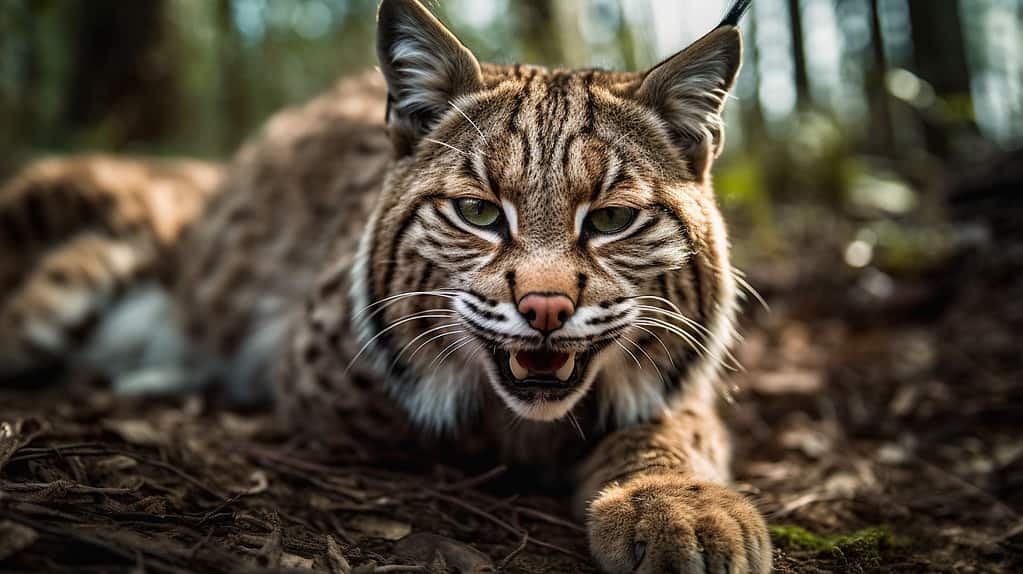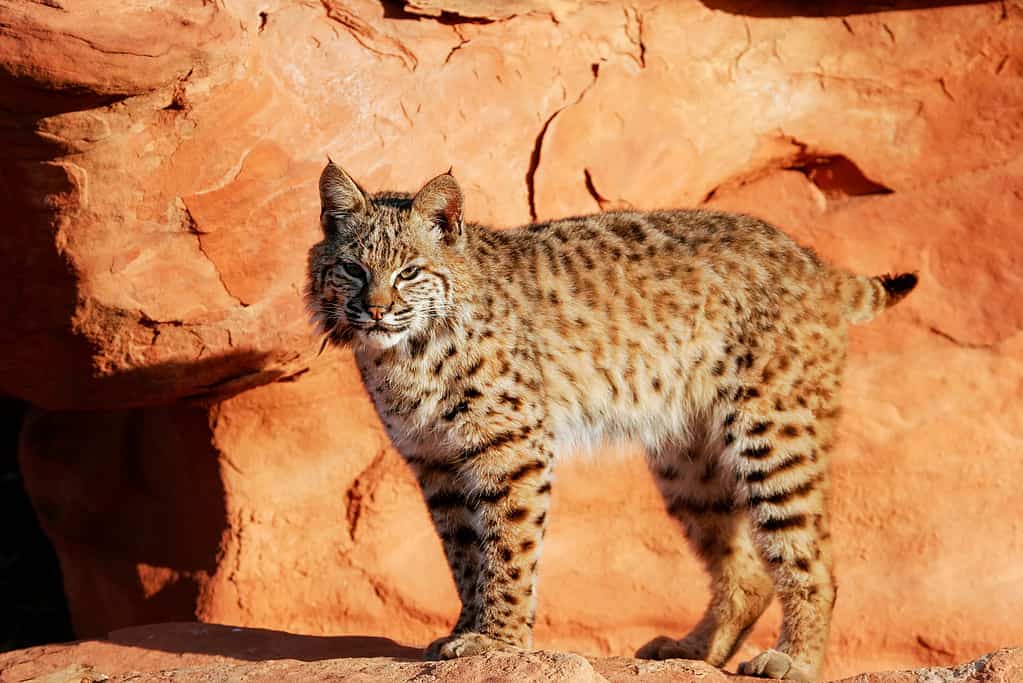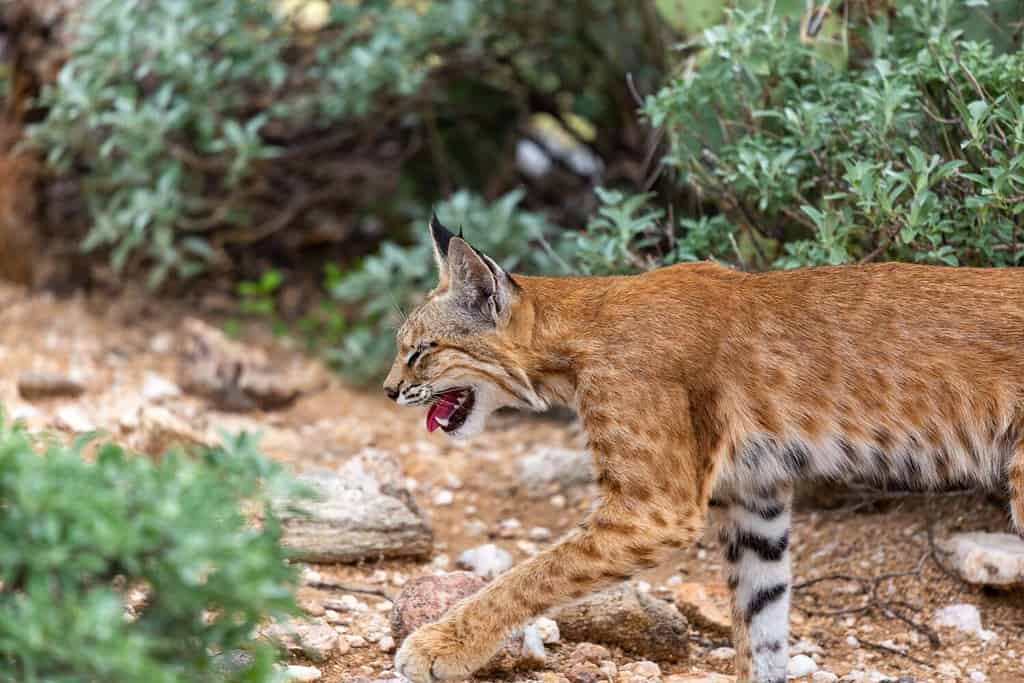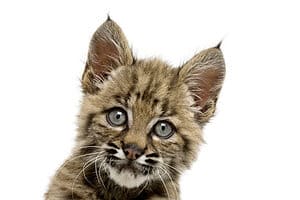As a member of the purring cat group, bobcats can actually be quite reminiscent of your own domestic cat when it comes to the sounds bobcats make. While they may be unable to roar, bobcats can express themselves through various sounds — some more familiar than others. Continue reading below to learn about the 8 sounds bobcats make, as well as what they mean.
Before diving into the different sounds bobcats make, however, it’s important to know that bobcats are stealth hunters. This means when they are pursuing prey, they can do so silently. Thankfully, however, due to their size and nature, bobcats are naturally afraid of humans. As a result, there is less concern about them hunting you, although they can be protective if you happen to stumble too close to them or their offspring.
Now that you know more about the bobcat’s silence, let’s dive into their different sounds!
1. Purring
As mentioned above, bobcats are members of the purring cat group. The family Felidae contains all 41 of the living species of cats on Earth today. However, these species are divided into two main extant subfamilies: Pantherinae and Felinae. Species that fall into the subfamily of Pantherinae are those like lions and tigers, species able to roar but not purr. Other species, like bobcats and housecats, fall into the subfamily Felinae: those able to purr but not roar.
Purring in bobcats is similar to that in domesticated cats. Often, this sound occurs when the bobcat is feeling relaxed or otherwise content.
2. Screams
If you happen to be out in the first alone, hearing a scream can be frightening. However, if you live in an area with purring cats like bobcats or even mountain lions, this human-like sound may be coming from them.
This terrifying sound is, surprisingly, not an offensive or territorial sound. Instead, bobcats will emit this high-pitched screaming when looking for a mate or during the mating process. Screaming is one of the most common ways that bobcats communicate with potential and current mates.
3. Barking

There is one sound, the cough-bark, that is rather unique to the bobcat. This sound is short and sudden, and its raspy, echoing quality has earned its name. Most often, bobcats will utilize the cough-bark when they feel threatened. It can be used to warn others nearby of a danger.
However, the bobcat also has other forms of barking, though the cough-bark is most common. Their smaller barks may sound more similar to that of a bird chirping than a cough or any other sound.
4. Growls
Growling is similar to barking in that it shows that the bobcat is feeling threatened. However, unlike barking, a bobcat’s growl demonstrates its intentions to protect itself as well as its territory. While the sound itself can be a deep, guttural noise, it is important to note that it is not loud. As a result, if you happen to hear a bobcat’s growl, you are close to this predator and should safely create distance.
Bobcats growl more often during the breeding season. This is because they are protective of their offspring and more likely to face challengers to their territory head-on as a way to keep predators away.
5. Hissing

If you hear a bobcat hissing, it means one is nearby and feels threatened by you.
©Don Mammoser/Shutterstock.com
Hissing is similar to growling. It means that the bobcat is feeling threatened and may attack. Their hiss is also another quiet sound, which means that you are close to the bobcat if you hear it.
A bobcat’s hiss sounds similar to that of a domesticated cat’s. As a result, you may more readily identify the sound if you have experience with scared cats.
6. Howls

Bobcats will use their howls in a way similar to their screams to communicate with other bobcats.
©Rejean Bedard/Shutterstock.com
While you may relate howling to dogs and wolves, bobcats may also howl. However, their howls sound much different than canine species.
A bobcat’s howl sounds more reminiscent of their scream than any dog’s howl. And, much like with their high-pitched screams, bobcats will howl as a way to communicate with potential mates. However, bobcats may also use this sound outside of the breeding season to communicate with others, much like with their meows.
7. Meows
Similar to hissing, you may be familiar with meowing if you have a cat or have been around cats before. While the bobcat’s meow is different than that of your average housecat, it serves a similar purpose in being a method of communication.
Meowing is a rare occurrence in bobcats.
8. Squalls

Bobcats will only squall when injured or frightened.
©Charles T. Peden/Shutterstock.com
The squall is another rare sound from the bobcat. This is because this sharp sound occurs only when the bobcat is in pain or alarmed. It is similar to the yowl of your housecat whose tail may have been stepped on or who became frightened by something.
The photo featured at the top of this post is © iStock.com/twildlife
Thank you for reading! Have some feedback for us? Contact the AZ Animals editorial team.







